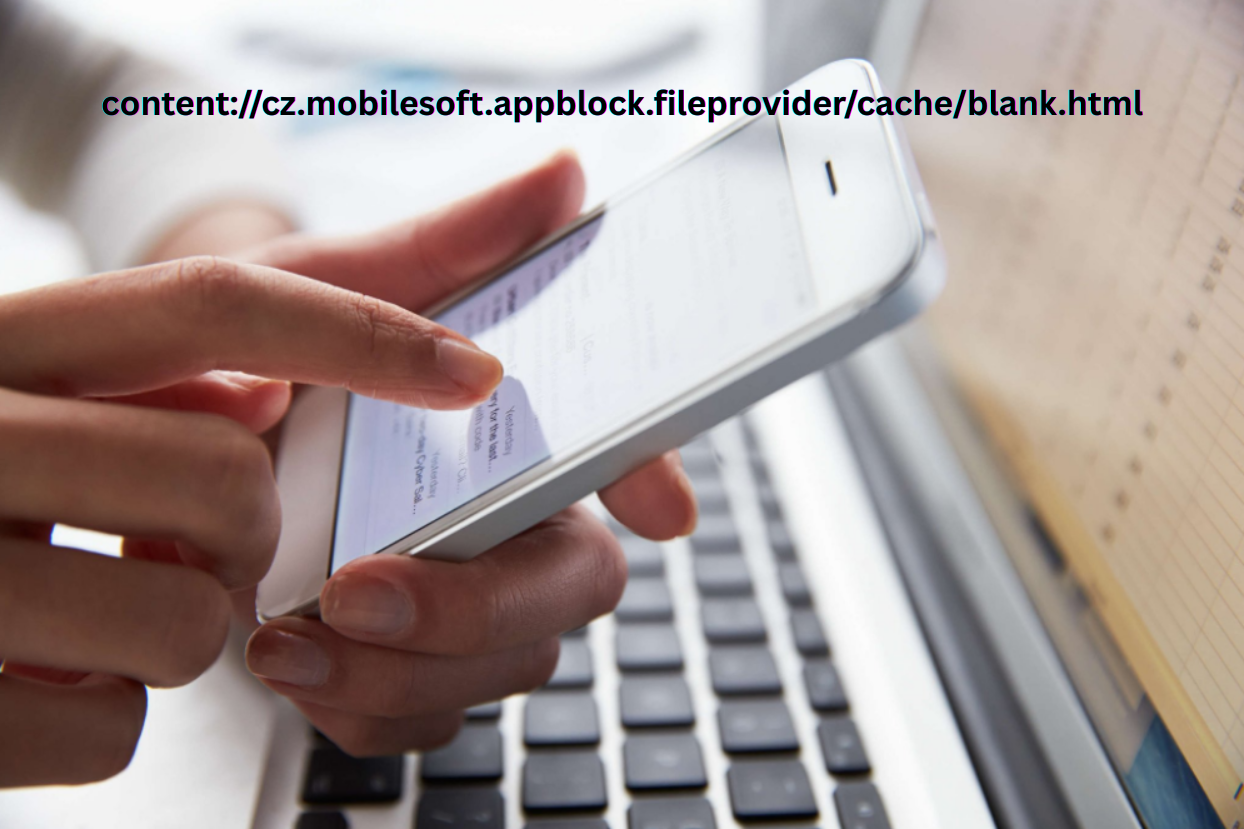It is the Android operating system, renowned for its versatility, that typically exposes developers and users to distinctive URI structures. One such structure that has caught the attention of many users and technical professionals is content://cz.mobilesoft.appblock.fileprovider/cache/blank.html. Although it might seem cryptic, this URI is rooted in Android’s mechanism for handling content. It has particular implications, particularly in connection with AppBlock, which is a well-known productivity tool. This article explores the significance, function and wider significance of this pathway to help users better understand its significance and any potential problems.
What Is content://cz.mobilesoft.appblock.fileprovider/cache/blank.html?
At its core content://cz.mobilesoft.appblock.fileprovider/cache/blank.html is a content URI. Android makes use of content://, which is a Content http:// scheme to permit apps to securely share files by using a ContentProvider. In this specific case, cz.mobilesoft.appblock refers to the package name of the AppBlock application, a popular app designed to reduce distractions by blocking other apps and websites. The URI is an uncached HTML file called blank.html, most likely a redirect or placeholder page that is used in the application to control the restriction of web access.
The Role of AppBlock in Digital Well-being
AppBlock is an efficiency and digital health application created by MobileSoft. It lets users restrict certain websites or apps temporarily. The URI content://cz.mobilesoft.appblock.fileprovider/cache/blank.html often appears when AppBlock intercepts and redirects an attempt to access a restricted website or resource. Instead of displaying the content, the app displays the blank HTML file to signal that content has been made unavailable and helps users avoid distractions.
Why Does the Blank HTML File Exist?
This file blank.html stored in the cache directory serves a purposeful function. When a user attempts to access a blocked website, AppBlock replaces the web page’s content using the blank file. This redirection method is light as well as non-disruptive. It is also highly effective. It makes sure that users don’t suffer a browser crash, or an unclear errors message but instead an uncluttered blank page gently reminding them that their content is being limited.
Security and Privacy Aspects of Content URIs
Knowing understanding the content:understanding the content: protocol is essential for Android users as well as developers. Contrary to the fileand URLs, which directly refer to files, the contentor URLs abstract file access providing the security of. In the case of content://cz.mobilesoft.appblock.fileprovider/cache/blank.html, this abstraction ensures that only permitted apps can access or display the file, preventing unauthorized manipulation. This is a way to strengthen Android’s sandboxing feature and safeguards private user data from harmful apps.
Common Scenarios Where Users Encounter This URI
A lot of users report experiencing many users report seeing the blank.html URI when they attempt to access restricted websites using Chrome or a different browser while in the course of an AppBlock session. For instance, if a user has configured AppBlock to restrict access to Facebook during work hours, opening Facebook will trigger a redirect to content://cz.mobilesoft.appblock.fileprovider/cache/blank.html, displaying a blank screen. Although this could be confusing for some users, it’s actually an purposeful and practical function of the application.
Troubleshooting Issues with content://cz.mobilesoft.appblock.fileprovider/cache/blank.html
While the URI is designed to fulfill a single use, some users face issues that are related to it. For instance in the event that AppBlock is not working properly or if the cache is damaged or corrupted, the blank.html file may not be loaded properly, resulting in unanticipated app behavior. In these instances clearing the cache of the app and upgrading AppBlock or even reinstalling the application will fix the issue. Developers must also handle these URIs carefully to avoid crashes of their apps in the event that content is not displayed.
Developer Insight: How FileProvider Facilitates Secure File Access
The Android FileProvider is an indispensable tool to share files between apps, without having to reveal the actual path of files. In the AppBlock application it uses the FileProvider is set up in the application’s AndroidManifest.xml and uses paths such as cache/blank.html to serve temporary or restricted files. This permits the app to provide files to other applications (like browsers) securely. When a browser receives the URI content://cz.mobilesoft.appblock.fileprovider/cache/blank.html, it retrieves the file through this provider interface, not directly from the disk.
SEO and Technical Concerns When Analyzing This Content URI
From an SEO viewpoint, the sight of the blank page or URI in analytics on your site could be a red flag. If a site administrator observes a high bounce rate from Android users visiting blank.html, it could mean that users are restricted from accessing content by apps such as AppBlock. Although this isn’t an issue on the server side, it could be a issue, it could inform strategies for marketing that focus on increasing the accessibility of content and enhancing user engagement by encouraging digital health and mindfulness instead of a brash consumption.
Importance of Cache in AppBlock’s Functionality
Its cache/blank.html location points to the presence of the use of a temporary data file which means it is located within the cache folder of the app. Cache files such as such are temporary and may be deleted by the system whenever the space is required. AppBlock employs this technique to guarantee efficiency and minimize storage consumption. The storage of the data in the cache can also prevent permanent storage of data, which is in line with Android’s recommendations to manage temporary resources.
Conclusion: Interpreting content://cz.mobilesoft.appblock.fileprovider/cache/blank.html in Context
In conclusion, content://cz.mobilesoft.appblock.fileprovider/cache/blank.html is not an error or malware, but a purposeful and smart implementation of Android’s content sharing model used by AppBlock. It is an empty HTML file that is used as a redirection tool in order to restrict websites or apps. Understanding its significance is important for those who want to control their online lives as well as developers who want to create privacy-conscious and secure apps. As digital security is becoming more important in our fast-paced digital world Tools like AppBlock and other mechanisms such as this URI play an essential part in helping people to manage their time.

